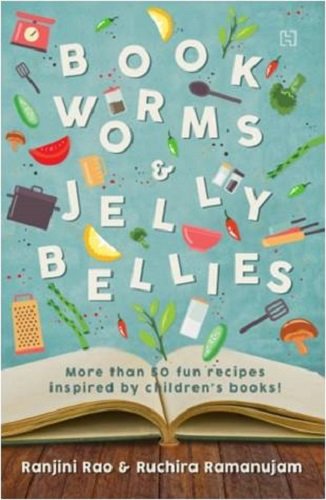
Millets have recently become a trending buzzword, with foodies, bloggers, fitness buffs and all manner of folks scrambling to discover more about these tiny grains that offer big promises. We attended a wonderful session aptly titled “The Mighty Millet Matters” led by Dwiji Guru, a technology developer working for sustainable solutions in food and agriculture. The session was hosted at Buffalo Back‘s old world Organic Studio in Jayanagar, Bangalore and the homely, well-lit space, with its stone benches, exposed brickwork walls, open kitchen and cool red oxide floors was not just completely appropriate for the discussions but also seemed to open up warmly to accommodate all the people who came in.
Since it was a long session, covering all kinds of details about the millet eco-system, we would like to bring you some interesting highlights and our key takeaways from it. The first thing we learnt was that the term ‘rice’ which to most of us means steaming mounds of fragrant white grains of paddy on our plates, actually is a generic term that refers to seeds or food grains obtained from grass-like plants. When you heap a scoop of millets or any other grains on your plate, then that is rice too, for example you could serve foxtail millet rice with your tadka dal.
So why are millets topping the charts as wonder grains and prime health food? The nutritional profile of millets we were told, is far superior to that of the paddy or wheat grains that most of us like to eat. One reason for this is that strains of grains that are domesticated and cultivated on such large-scales as wheat and paddy are selected mostly for characteristics like high-yield and hardiness, and not really for their nutritional content. Also, these selectively bred grains themselves, having been grown in comfortable farming conditions over long periods of time, become less nutritious than their cousins that grow in more spartan environments. Therefore, the less domesticated the grain or seed is, the more nutritious it is! An equivalent example for this is the oils that we consume..artisinal edible oils obtained from seeds like apricot, nigella and flax are far superior in their nutritional content than the oils from mass cultivated sunflower, safflower and palm crops.
Dwiji Guru also explained to us why the cultivation of paddy and wheat gained momentum and eclipsed other ancient grains like millets, sorghum, kamut and spelt all over the world. It is not that paddy or wheat are easier to cultivate than millets. They require intensive investments in terms of the type and fertility of the soil, topography of the land, pesticides and fertilisers, water, farm labour and processing facilities. Millets on the other hand are hardier crops that can grow in drier, rugged terrains, with high tolerance for drought conditions.
Perhaps due to the human penchant for things that come with a premium tag, over time paddy and wheat became the rich man’s food, and the native grains were left behind to feed the birds and nourish the economically poorer sections of our society. Paddy and wheat cultivation also gained huge impetus due to investments and stakes by the government in terms of subsidies, R&D, infrastructure for processing and marketing support. Powerful schemes like the Green Revolution brought in sweeping changes in agriculture and contributed to the gradual undoing of millet farming.

One key learning for us was that the millet we buy from the stores may not be whole grain! If the millet grains look white and smooth, then we must check whether the bran has been removed before packaging.
We were asked to look closely at samples of the different varieties of whole millets that Dwiji Guru had brought, including red and yellow Foxtail, Barnyard, Little and Proso millets. He also asked us to try and remove the husk from some of the whole millets using sandpaper, so that we could see the difference between the whole and refined grains. Since they are so tiny, millet grains are harder to process and this is one reason for the higher price tags that they carry in comparison to paddy and wheat.
Natural grains would also leave traces of an oily residue on your palms after being handled, whereas this would have been stripped away if they have been refined. Always try to buy the whole grain millets to gain the best out of them.

Millets are highly nutritious, and have high levels of dietary fiber, antioxidants, calcium and essential trace minerals like magnesium and phosphorus. They are gluten-free and easy to digest. They are also low on the glycemic index. It was suggested that we cook with a range of millet varieties and other whole grains rather than serving only rice and wheat at our tables.
In our experience it is difficult for small families to stock a large variety of grains in the pantry, especially organic ones, since their shelf life can often be limited due to being unprocessed. What we like to do is to buy a couple of different ones each time we shop, to ensure variety, while still keeping pantry stocks manageable.
Cooking millets is easy, and once you start using them you will discover inventive ways of including them in your meals. Whole millets grains can be cooked up as porridge, pongal or khichadi, wheat rawa can be easily subbed with millet rawa in your morning upma and plain cooked grains can be served like rice as mentioned earlier.
Millet flour is a nutty and rich-tasting whole grain and gluten-free substitute, and most millets can also be easily ground up in dosa and other batters. Minimally processed millet products like millet flakes can be substituted in poha preparations, and now you can even find popped millet kernels in speciality stores. The trick is to stay close to the whole and unprocessed form of the grain..a millet cookie that has been baked with maida tempered by a dash of millet flour and oodles of hydrogenated fat is obviously not the best choice in the scheme of things.
Our hosts served up some delicious millet-based dishes that brought to our tastebuds the versatility of these grains. A pearl millet ganji or hot drink, spiked with the throat-tingling heat of ginger and pepper was perfect for that mild Bangalore winter day. We loved the savoury Kodo millet kozhukattais or steamed Kodo millet balls, served with a herbed coconut chutney. And some mixed millet cookies rounded off the delicious sampling.
Here are some millet recipes from the Tadka kitchens that you may want to try –
Foxtail millet kheer with jaggery
You can find more recipes here for many varieties of millets.
We hope that you enjoyed this post. Watch for our next “Around Town” venture where we tell you more about the delightful venue where this millet session was held.














Pingback: Around Town: Buffalo Back Organic | Tadka Pasta